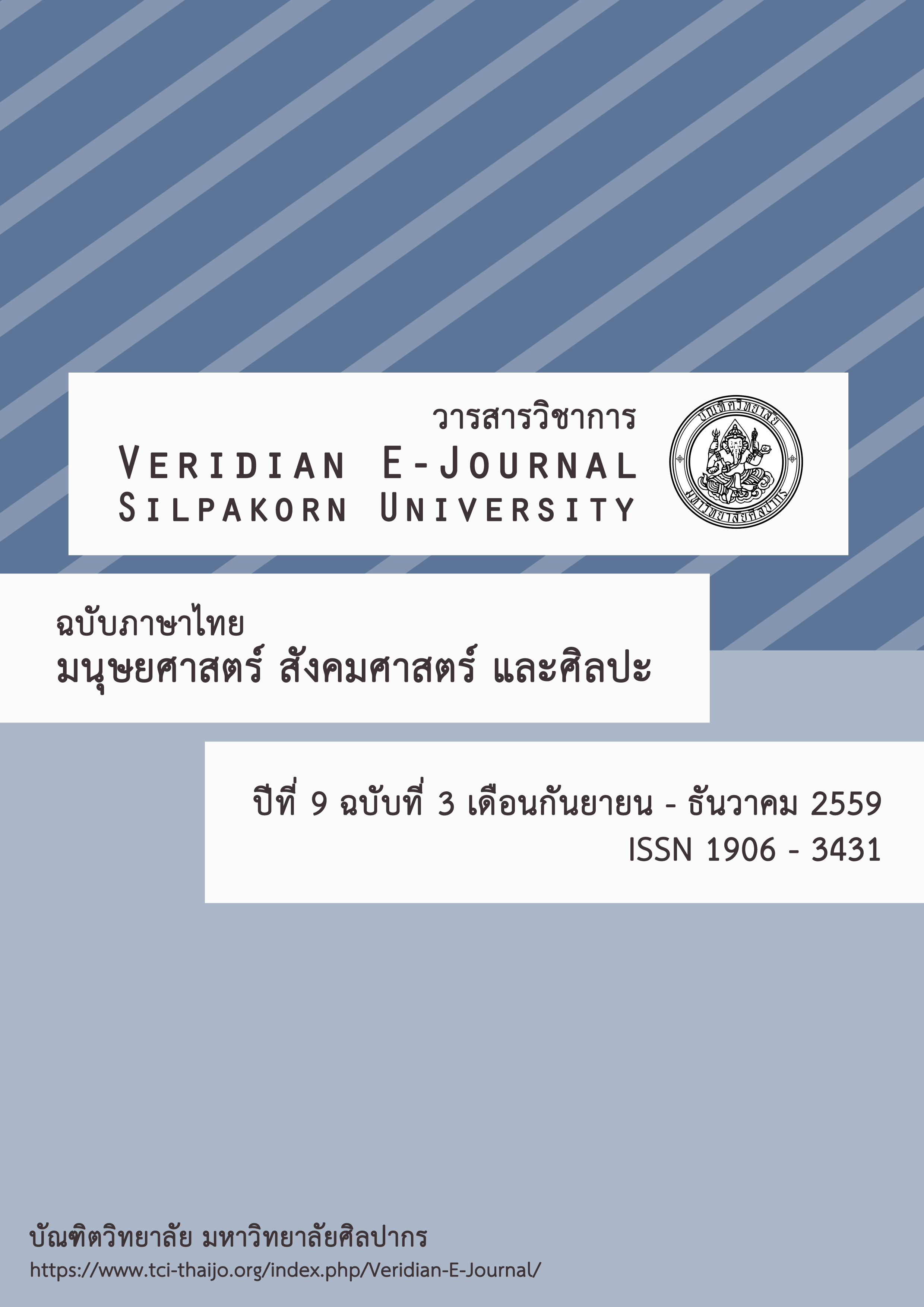รูปแบบความสามารถทางการแข่งขันของผู้ประกอบการ OTOP ที่เป็น SMEs ในประเทศไทย
Main Article Content
Abstract
การวิจัยมีวัตถุประสงค์เพื่อศึกษาหาปัจจัยเชิงสาเหตุความสามารถทางการแข่งขันและตรวจสอบความสอดคล้องโมเดลความสัมพันธ์เชิงสาเหตุของความสามารถทางการแข่งขัน และผลการดำเนินงาน ผู้วิจัยดำเนินงานวิจัยโดยใช้การวิจัยเชิงปริมาณ โดยใช้แบบสอบถามเป็นเครื่องมือในการเก็บรวบรวมข้อมูลจากผู้ประกอบการ OTOP ที่เป็นวิสาหกิจขนาดกลางและขนาดย่อม (SMEs) จำนวน 1,585 รายผู้ประกอบการ โดยสุ่มตัวอย่างอย่างแบบเป็นระบบและสุ่มแยกประเภทตามผลิตภัณฑ์ ได้รับแบบสอบถามคืนกลับมา 386 รายผู้ประกอบการ คิดเป็นร้อยละ 96.50 สถิติที่ใช้ในการวิเคราะห์ข้อมูล ได้แก่ การแจกแจงความถี่ การหาค่าเฉลี่ย ค่าร้อยละ และการวิเคราะห์โมเดลสมการโครงสร้าง(structural equation modeling) โดยใช้โปรแกรม LISREL
ผลการวิจัยพบว่าโมเดลความสัมพันธ์เชิงสาเหตุของความสามารถทางการแข่งขันมีอิทธิพลต่อผลการดำเนินงานของผู้ประกอบการ OTOP มีความสอดคล้องกับข้อมูลเชิงประจักษ์ ทั้งนี้ค่าสถิติไค-สแควร์ (c2) เท่ากับ 146.19 ที่องศาอิสระ (df) 121 ค่า (p-value) เท่ากับ 0.059 ค่าไค-สแควร์สัมพัทธ์ (c2/df) เท่ากับ 1.208 ดัชนีวัดค่าความสอดคล้องกลมกลืนเชิงสัมบูรณ์ GFI เท่ากับ 0.962 และค่า AGFI มีค่าเท่ากับ 0.940 ค่า RMSEA มีค่าเท่ากับ 0.023 นอกจากนี้ผลงานวิจัยยังพบว่า (1) ทุนทางปัญญามีอิทธิพลเชิงบวกต่อความสามารถทางการแข่งขัน (2) ความสามารถทางนวัตกรรมมีอิทธิพลเชิงบวกต่อความสามารถทางการแข่งขัน (3) ความเป็นผู้ประกอบการทางการตลาดมีอิทธิพลเชิงบวกต่อความสามารถทางการแข่งขัน (4) ความสามารถทางการแข่งขันมีอิทธิพลเชิงบวกต่อผลการดำเนินงาน ทั้งนี้ผลการยืนยันโมเดลความสัมพันธ์เชิงสาเหตุความสามารถทางการแข่งขันว่ามีความสัมพันธ์กัน มีความเป็นไปได้ และความถูกต้อง สามารถนำไปประยุกต์ใช้ได้จริงสอดคล้องกับแนวคิดทฤษฎีและกรอบแนวคิดในการวิจัย
The objectives of this research were to found factor of causal relationship model of competitiveness indicated that the intention towards competitiveness was a direct cause of performance. The researchers used quantitative methods which involved empirical research. The research tool was a questionnaire to collect data from 1,585 entrepreneurs in Small and Medium Enterprises. The sample random Systematic Random Sampling and Stratified Random Sampling. The respondents were 386 entrepreneurs (96.50%). The statistics used in data analysis were frequency, mean, and structural equation model analysis by using LISREL.
It was found that the model was consistent with the empirical data. Goodness of fit measures were found to be: Chi-Square (c2) is 146.19 at degree of freedom 121, P-value 1.208 Chi-Square relative (c2/df) is 0.719, Goodness of Fit Index (GFI) is 0.995. Adjusted Goodness of Fit Index (AGFI) is 0.979 and Root Mean Square Error of Approximation (RMSEA) is 0.023 It was also found that (1) Intellectual Capital had a positive and direct influence on competitiveness (2) Innovativeness had a positive and direct influence on competitiveness (3) Marketing Entrepreneurship had a positive and direct influence on competitiveness (4) competitiveness had a positive and direct influence on performance. The result confirms a causal relationship model of competitiveness. Among five components of model of a causal relationship model of competitiveness are found: propriety, accuracy, utility, accordance with relevant theories and research of conceptual frameworks.

